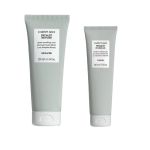
Hair removal, between social diktat and personal choice
A new investigation by Braun makes us think about biases, conventions and techniques
July 13th, 2023
For some it is a simple automatism, for others a practise imposed by society against which one must rebel, for still others it is a question that one asks oneself depending on the occasion, but which becomes more and more pressing in the summer: Hair removal yes or hair removal no? It all depends.
Short history of hair removal
Looking back, Cleopatra seems to have been one of the first women to shave. Like the rest of her people, the Egyptian queen combined this habit with a mix of hygiene, aesthetics and spiritual purity, using a type of waxing very similar to today's sugar removal. Travelling between eras and different parts of the world, we find that Turkish women were among the first testers of waxing, while the Arabs invented threading. In the Middle Ages, female hair was something that had to be kept hidden and private and could not be removed or shown. This idea was not shared by Elizabeth I of England, who believed that hair (at least that on the face) should be cared for as a sign of civilisation. The first razor for women? Gillette launched it in 1915 and it became an instant hit thanks to the movies and the proliferation of women's magazines that helped make hair removal a statement for women. Fun fact? The story goes that Marilyn Monroe and Liz Taylor not only shaved their legs, groynes and armpits, but also their faces. Since then, a hairless, smooth body has become almost a must-have, aided by the aesthetics of pornography, which contributed to the popularity of Brazilian wax in the 1980s and 1990s. Today, as a legacy of the feminism of the 1960s, there are people who want to free themselves from this beauty bondage. The Body Hair Positivity movement advocates free will. We must rebel against the dictatorship of the glabrous and rewrite the concepts of beauty and femininity by deciding for ourselves whether to hold a razor or let our hair grow free.
Is hair removal really free of prejudice and social conventions?
Braun, together with the Institute for Social and Marketing Research Eumetra, examined personal decisions on the subject of hair removal and found that even today, some of the women surveyed still perceive hair removal as an imposition on themselves or as a social expectation and forego meaningful activities such as visits to the doctor (as many as 1 in 4 women) or intimate relationships (more than 1 in 5) because of their hair. Feelings of inadequacy and frustration, even shame, are the feelings most strongly associated with the presence of hair, so that they often deny the possibility of experiencing their bodies in harmony. Interestingly, by contrast, the representative sample of the LGBTQIA+ community, driven by the need to have a more attentive and conscious dialogue with their bodies from the outset, seem to experience their relationship with hair in a less confrontational way. Seven per cent of respondents abstain from hair removal, compared to 1 per cent of the overall sample, and furthermore, 55 per cent say their self-confidence does not depend on hair removal (compared to 29 per cent of the baseline sample). Even in relationships with their partners, 46% are not worried about the presence of hair (compared to 26% of the overall sample). Despite the difficulty many respondents have in emancipating themselves from the dictate that our bodies should be smooth, there are a number of signs that point to a slight cultural shift on the issue of hair removal. thirty-six per cent of respondents say they accept it if a woman does not shave. Attitudes change when it comes to intimate hair removal, with only 16 per cent of respondents believing it is acceptable not to shave the bikini line. "The data collected shows us that there are encouraging signs today of greater freedom in hair removal choices". - comments psychologist Ilaria Albano - "Over time, people have developed greater awareness and self-esteem thanks to the promotion of an authentic self-image and beyond imposed beauty norms. Everyone is increasingly free to make decisions regarding their body and hair. Because every body has its own story and we have to respect it, with tolerance."

Depilation or epilation?
How to shave united eyebrows, moustaches, but also unwanted hair on legs, groyne, armpits, belly, back?
How do you get rid of isolated eyebrows, whiskers and unwanted hair on the legs, groyne, armpits, stomach and back? There are many different methods depending on personal needs and sensitivities. The first step to get started is to understand the difference between depilation and epilation. The first category includes quick and painless solutions that remove hair where it comes out of the skin and therefore have a temporary effect, such as razors, tweezers, pads and depilatory cream.
- Razor: cuts the hair where it comes out of the skin. It grows back quickly, but it's quick and painless. And it is not true that the hair grows back thicker, harder and shaggier. It is important to use it together with a special hair removal product that softens the skin (which should also be moisturized after shaving) and to change the blade frequently to avoid bacterial growth.
- Depilatory cream: Similar to a razor, it cuts the hair chemically. Not suitable for very sensitive skin.
- Tweezers: best used only for small precision areas such as eyebrows, chin and for beard hairs above the lip.
Unlike depilation, epilation goes deeper and also removes the hair bulb. Methods that allow hair to grow back longer, ranging from 4 weeks for waxing to 5/6 years for permanent hair removal, fall into this category.
- Hot or cold waxing: can be done at the beautician's or at home. The pain is moderate, but you do not have to think about hair for a period of about three weeks. It is generally not recommended for people with sensitive skin or who suffer from capillary weakness.
- Sugaring: This is an epilation with sugar paste. It is a very gentle technique that pulls out the hair without destroying it. The advantage? It's perfect for more sensitive areas, like the groyne, and helps prevent ingrown hairs.
- Electric epilator: The many small tweezers placed on the head (often completely flexible to fit the curves of the body) extirpate the hair with the entire bulb. The pain is subjective but can be quite uncomfortable, especially in the most sensitive areas. A useful tip is to exfoliate with warm water an hour before epilation to open the pores and soften the skin.
- Laser: is a painless but definitive treatment that acts on the melanin in the hair bulb and is performed in several sessions, depending on the amount of hair to be removed. The disadvantages? Red and white hairs that no longer have melanin cannot be treated.
- Pulsed light: a beam of high-intensity polychromatic light acts on the pigment of the hair and causes it to fall out. Can be done in a specialised centre or at home with ad hoc instruments. Like the laser, it cannot be used on red and white hair.























.webp)





















































